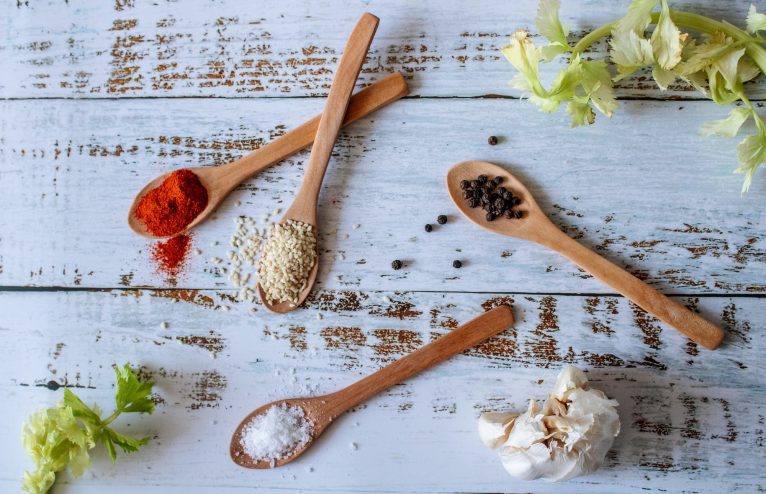Considered by many as the oldest healing science, Ayurveda is a holistic approach to health and wellbeing, designed to bring strength, balance and longevity.
With origins in India and wide practice in Nepal and Sri Lanka, Ayurveda’s key concepts, such as the three ‘doshas’, are now increasingly discussed across the globe. For example, Holland and Barrett included the return of Ayurveda in their UK-based Wellness Trend Report for 2023.
To help beginners understand how Ayurveda can improve their mental, physical and spiritual health, we spoke to Ayurvedic experts about embracing the principles with appreciation not appropriation; through diet, wellness activities and beauty routines.
What is Ayurveda?
“Ayurveda is an ancient Indian system of medicine that has been practised for thousands of years,” explains the Ayurvedic therapist Amrita Ma Devi. “It focuses on the holistic approach to health and wellness, highlighting the interconnectedness between the mind, body, and spirit, while emphasising balance and harmony in all aspects of life.”
View this post on Instagram
“Ayurveda can be described as the art of adding life to your years not just years to your life”, agrees the Ayurvedic skin expert and founder of Purearth, Kavita Khosa. “The Ayurvedic system of medicine looks to the cause not just the effect and it is described in a way that is codified and works on the principles of being in balance with nature.”
What does Ayurveda mean?
“The word Ayurveda comes from the Sanskrit language and combines two words: Ayur, which means life, and Veda, which means knowledge,” says Ma Devi. “Ayurveda is, therefore often referred to as the knowledge or science of life.” It’s no wonder then that many of its principles focus on prolonging not only the length of, but the quality of your life.
What are the doshas?
One of Ayurveda’s most integral concepts is the ‘doshas’ – three energy types that govern physical, mental, and emotional health. As outlined by Healthline, “Ayurvedic medicine is based on the idea that the world is made up of five elements – aakash (space), jala (water), prithvi (earth), teja (fire) and vayu (air). A combination of each element results in the three doshas.”
View this post on Instagram
These three doshas are Vata, Pitta and Kapha. Individuals tend to lean naturally more towards one of them, which influences their natural appearance and behavioural qualities. “Doshas are very elemental and are at the core of understanding how your health and your system works if you want to follow the Ayurvedic system of health,” reveals Khosa. “Doshas are basically the elements of nature (what is in nature you will find within you), and ‘like attracts like’.”
What happens if your doshas are imbalanced?
It can be helpful to think of each dosha being like a two-way scale, which, when out of balance, can cause physical and emotional problems. “For example if you are Vata (air-dominated) you need to avoid things that will aggravate or increase your Vata,” says Khosa, which means focusing on stabilising influences and routines. “If you are Pitta (heat and fire dominant) you need to bring it down with cooling principles and cooling foods.” With Kapha – the water-dominated dosha that ‘binds things together’ – routines need to avoid sluggishness and encourage movement. The aim is to get all your doshas back to their natural levels for your body.
“For example, if you have a pimple, Ayurvedic principles will identify it according to doshas – whether it is caused by dryness, excess mucus, water or heat,” continues Khosa. “It is then treated according to what the dosha imbalance is in that person, so there is no cookie cutter way of treating a pimple.”
For that reason, one of the first things you should do to properly engage with Ayurvedic principles is to have your dosha read. “A dosha reading can help you understand your unique constitution and identify imbalances causing health issues,” confirms Ma Devi. “A certified practitioner then uses this information to develop a personalised treatment plan.”
What qualities define the three doshas?
Vata Dosha
Elements: mostly air and space.
Qualities: cold, light, dry, rough, flowing.
Appearance: slim, energetic, easily distracted.
Strengths: quick-learners, multitasker, flexible, creative.
Weakness: forgetful, anxious, digestive issues, prone to colds.
Recommended routine: rigid morning and nighttime routines, grounding meditation, consume warm food and hydrate often.
Pitta Dosha
Elements: mostly fire and water.
Qualities: hot, light, sharp, oily, mobile.
Appearance: muscular, athletic, strong leaders.
Strengths: highly motivated, intelligent, goal-orientated, strong, quick metabolism.
Weakness: overcompetitive, aggressive, impatient, always hungry, prone to acne.
Recommended routine: cooling activities such as cold showers, walks by the river, avoid spicy food, encourage spontaneity in the routine and work-life balance.
Kapha Dosha
Elements: mostly water and earth.
Qualities: steady, stable, slow, cold, soft, caring.
Appearance: strong, thick-boned.
Strengths: calm, supportive, grounded, forgiving, strong bones and joints.
Weakness: jealousy, sluggishness, weight gain, breathing issues.
Recommended routine: build a routine based on self-care including breathwork, regular exercise, avoid oily foods in favour of fresh fruit and vegetables, establish a regular sleep routine.
View this post on Instagram
What are the concepts of Rutacharya and Dinacharya in Ayurveda?
‘Chaya’ means ‘behaviour’ or ‘discipline’ in Sanskrit, while Din’ means ‘day’ and ‘Rut’ means ‘seasonal’. Therefore, Dinacharya is the traditional Ayurvedic daily routine and Rutacharya means living in harmony with a ‘seasonal regime’.
“Rutacharya is seasonal; how we work in harmony with nature when it comes to seasons,” summarises Khosa, “and Dinacharya is how we work in harmony with nature when it comes to the Ayurvedic clock or times of day and what elements of nature govern those times of day. The Ayurvedic clock is divided into cycles of 4 hours over 24 hour period and it is all divided into doshas.”
The seasons are also said to have predominant dosha qualities. Winter is neutral, spring favours Kapha, summer favours Pitta and autumn favours Vata. For that reason, the seasons, for example hot qualities in the summer versus the cooler months in winter, can lead to imbalances that need to be addressed throughout the year. Shifting your diet, daily activities and approach to exercise can thus create a healthier seasonal transition.
These changes are said to be most obvious during seasonal transitions, so while the source of said imbalances may be defined differently, the concept can feel quite similar to the Western concepts of ‘spring cleaning’ and seasonal skincare changes.
How does Ayurveda differ to ‘Western’ medicine?
“Ayurveda differs from Western medicine in that it views health as a balance between the individual and their environment. In contrast, Western medicine focuses on treating specific symptoms with medication,” reveals Ma Devi. “Ayurveda recognises that each person is unique and therefore requires an individualised approach to healthcare. This is why Ayurvedic practitioners take into account a person’s physical, mental, and emotional state when making a diagnosis and developing a treatment plan.”
Ingredients-wise, there are differences too. Western skincare techniques, for example, tend to adhere to the ‘Dalton rule’, “which talks about the molecular weight of an ingredient and how it can penetrate into the skin or blood stream,” says Khosa. “Ayurveda, however, talks about ingredients not just based on molecular weight, but on the potency power of the ingredient; how sharply and deeply it can penetrate regardless of its molecular weight.”
Is there any controversy?
Nowadays, Ayurveda is sometimes described as pseudoscientific, because it is centred on healing through spiritual concepts such as the doshas, rather than provable medical principles like germ theory. Traditional Ayurvedic teaching, for example, suggests that certain plants and remedies can help slow or cure cancers and other serious diseases, although recent research suggests minimal or lacking evidence, especially in comparison to modern surgery.
For that reason, while there is a surgical aspect to traditional Ayurvedic teaching, modern healers tend to increasingly work alongside modern medicine – and that is what is being increasingly promoted in the West. In this way, Ayurveda is used to boost wellbeing and health when serious disease such as cancer is absent or already being treated with modern medicine.
View this post on Instagram
What ingredients are integral for Ayurveda?
“Ayurvedic products are known for their use of natural tropical plant ingredients, such as turmeric, ashwagandha, ginger, and ghee,” says Ma Devi. “These ingredients have been used for centuries for their powerful healing properties and are often found in Ayurvedic remedies and treatments. For example, many teas with herbs have been known to improve digestion problems such as bloating or constipation.”
Ma Devi’s recommendations:
Ashwagandha: also known as the herb of strength, it is used to boost immunity and reduce stress.
Ginger: the universal healer, has been used to treat a variety of ailments, including nausea and inflammation.
Ghee: a form of clarified butter, has one of the highest smoke points of all oils and is used in many Ayurvedic preparations.
Tumeric: known for its bitter taste and vibrant colour, it has been used for a thousand illnesses.
Khosa’s recommendations:
Shatavari: Shatavari translates loosely to ‘she who has a 100 husbands’. It is excellent for managing estrogen levels and is also used in modern medicine to control menopause and period pains. It is also good for the skin.
Neem: one of the five sacred plants. It is antibacterial, antimicrobial, well-researched and a potent blood purifier – every part of it is useful.
Cow Ghee A2: from a particular cow breed. Ghee is interesting as it takes every property of the ingredients it is formulated with, but it will never give up its own property. Ghee is cooling and sweet in Ayurvedic potency and is remarkable for every skin type and issue.
What are some simple ways to access the benefits of Ayurvedic practices in your daily life?
“Start in the morning with Gandusha which means ‘oil pulling’,” suggests Khosa. “It is very much at the core of Ayurvedic daily rituals.” Oil pulling involves holding oil in your mouth for around five minutes before gargling and spitting out. It is recommended first thing in the morning before you have eaten and is said to benefit your oral health, enhance skin quality and improve voice quality.
“A simple way to access the benefits of Ayurvedic practices is incorporating herbs and spices into your diet,” continues Ma Devi. “You should ensure that your daily routine follows nature, you eat seasonally, eat locally and eat according to your dosha type. Practice mindful eating, which involves paying attention to the taste, smell, and texture of your food, as well as the physical and emotional sensations that arise while eating. Another way is to practice self-care rituals, such as the self-oil massage called abhyanga, or pranayama, meditation, and yoga.”
View this post on Instagram
“You can also do Shatpavali which means 100 steps,” says Khosa. “After your meal Ayurveda recommends that you walk 100 steps which helps digest your food. Also eating food in the proper order so you are digesting your food in the correct manner.”
Another option is the rise in Ayurvedic focused wellness retreats, where you can immerse yourself in the concept and come away from your holiday having learned something new. That includes Ma Devi’s Vital Living Retreat in Mallorca this November, where you will benefit from Ayurvedic-inspired plant-based meals, yoga, breathwork and lectures from leading experts. The Anantara’s luxury hotels and resorts also have a host of short Ayurvedic packages in the countries where the practice originated. The standout is Anantara Peace Haven Tangelle’s Inner Harmony programme in Sri Lanka, which includes one-to-one consultations and sessions with experts, as well as indulgent tailored spa treatments.
For a taste of Ayurvedic principles in London, you can also head to Knightsbridge’s Bulgari Spa, where Mauli Rituals offer a nurturing ritual designed to balance using Ayurveda’s healing principles.
View this post on Instagram
How can we ensure cultural appreciation not appropriation?
“When it comes to Ayurveda, it is crucial to maintain cultural appreciation and avoid appropriation,” says Ma Devi. “This involves showing respect for the practice’s origins and avoiding any misrepresentation or exploitation. By practising Ayurveda in a culturally sensitive and respectful manner, we can ensure that we honour its history and traditions.”
The simplest way to make this happen is to see an Ayurvedic expert who has a strong heritage-based link to the principles, including travelling to India, Sri Lanka and Nepal where they are traditionally based. In fact, many practitioners come from generations of Ayurvedic doctors, meaning they benefit from knowledge acquired and passed down for decades.
“I hope the industry becomes more careful and mindful about how they talk about Ayurveda,” agrees Khosa. “For example showing on Instagram that you are making turmeric tea doesn’t make you an Ayurveda specialist or mean that you are following Ayurvedic principles. So many people talk about Ayurvedic recipes with cooked honey in them but honey should never be eaten hot.”
“My view is that even Indians, even brand founders, chemists, cosmetic chemists also misappropriate,” Khosa continues. “You don’t have to be from another culture to misappropriate. For example, if an Indian person is running yoga classes and calling them wine yoga that is misappropriation, calling a product Bakuchi Oil without fully understanding holistically what the plant is all about is too. It is things like that which are misused or overused. We need a little bit more respect and mindfulness when it comes to Ayurvedic ingredients and principles.”
What are the most important things that someone needs to know about Ayurveda?
“It is important for individuals to understand that Ayurveda is not a one-size-fits-all approach, and requires time and effort to fully understand and implement its principles,” concludes Ma Devi.
“It is also about understanding at what stage you are in life to get the best out of Ayurvedic principles, which leads to you being very healthy, disease free, and – when it comes to beauty – to have healthy skin that radiates vitality,” confirms Khosa.
What to shop: Ayurveda
We may earn a commission if you buy something from any affiliate links on our site.
Lead photo credit: Shantanu Pal via Pexels



















Any Questions or Tips to add?